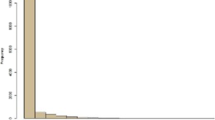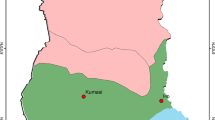Abstract
Predicting drought is the process of forecasting and classifying the dryness of the weather. The availability of long term meteorological data in the form of time-series data allows for various multivariate time-series forecasting techniques to be applied on it. Datasets consist of various meteorological parameters such as ‘Precipitation’ and ‘Surface Pressure’, and a target variable which specifies the degree of dryness. Various machine learning techniques such as recurrent neural networks (RNN) and long short-term memory (LSTM) can be used to forecast the value of score for various lead times. RNN is used to forecast for shorter lead times of 1 to 2 weeks, whereas LSTM is used for forecasting for lead times of 8 to 12 weeks. The results of the prediction can prove to be helpful in many ways. Prior knowledge of weather conditions allows us to minimize the catastrophic effects of extreme weather conditions given appropriate actions are taken for mitigation and prevention. In order to make an action plan for mitigation, it becomes necessary to predict weather conditions as well as the severity of it. Mitigation strategies can include alternate crop recommendations to farmers and special aid to regions which are at most risk.
Access this chapter
Tax calculation will be finalised at checkout
Purchases are for personal use only
Similar content being viewed by others
References
Dakshin, D., Rupesh, V. R., & Praveen Kumar, S. (2019). Water hazard prediction using machine learning. International Journal of Innovative Technology and Exploring Engineering Regular Issue, 9(1), 1451–1457. https://doi.org/10.35940/ijitee.a4245.119119
Elsafi, S. H. (2014). Artificial neural networks (ANNs) for flood forecasting at Dongola Station in the River Nile Sudan. Alexandria Engineering Journal, 53(3), 655–662. https://doi.org/10.1016/j.aej.2014.06.010
Dikshit, A., Pradhan, B., Alamri, A. M. (2021). Long lead time drought forecasting using lagged climate variables and a stacked long short-term memory model. Science of The Total Environment 755(Part 2), 142638. https://doi.org/10.1016/j.scitotenv.2020.142638
Abbot, J., & Marohasy, J. (2014). Input selection and optimisation for monthly rainfall forecasting in Queensland, Australia, using artificial neural networks. Atmospheric Research, 138, 166–178. https://doi.org/10.1016/j.atmosres.2013.11.002
Aghakouchak, A., Farahmand, A., Melton, F. S., Teixeira, J., Anderson, M. C., Wardlow, B. D., & Hain, C. R. (2015). Remote sensing of drought: Progress, challenges and opportunities. Reviews of Geophysics, 53(2), 452–480. https://doi.org/10.1002/2014rg000456
Felsche, E., & Ludwig, R. (2021). Applying machine learning for drought prediction using data from a large ensemble of climate simulations. https://doi.org/10.5194/nhess-2021-110
Bueh, C. & Nakamura, H. (2007). Scandinavian pattern and its climatic impact. Quarterly Journal of the Royal Meteorological Society, 133, 2117–2131. https://doi.org/10.1002/qj.173
Trenberth, K. (2011). Changes in precipitation with climate change. Climate Research, 47(1), 123–138. https://doi.org/10.3354/cr00953
Jalili, M., Gharibshah, J., Ghavami, S. M., Beheshtifar, M., & Farshi, R. (2014). Nationwide Prediction of Drought Conditions in Iran Based on Remote Sensing Data. IEEE Transactions on Computers, 63(1), 90–101. https://doi.org/10.1109/tc.2013.118
Heim, R. R. (2002). A review of twentieth-century drought indices used in the United States. Bulletin of the American Meteorological Society, 83(8), 1149–1166. https://doi.org/10.1175/1520-0477-83.8.1149
Silva, R. P., Dayawansa, N. D., & Ratnasiri, M. D. (2007). A comparison of methods used in estimating missing rainfall data. Journal of Agricultural Sciences, 3(2), 101. https://doi.org/10.4038/jas.v3i2.8107
Kansara, M., Maity, P., Malgaonkar, H., & Save, A. (2020). A Novel Approach for Early Prediction of Drought. In 2020 6th International Conference on Advanced Computing and Communication Systems (ICACCS). https://doi.org/10.1109/icaccs48705.2020.9074405
Aswathi, P. V., Nikam, B. R., Chouksey, A., & Aggarwal, S. P. (2018). Assessment and monitoring of agricultural droughts in Maharashtra using meteorological and remote sensing based indices. ISPRS Annals of the Photogrammetry, Remote Sensing and Spatial Information Sciences, IV-5, 253–264. https://doi.org/10.5194/isprs-annals-iv-5-253-2018
Dodamani, B. M., Anoop, R., & Mahajan, D. R. (2015). Agricultural drought modeling using remote sensing. International Journal of Environmental Science and Development, 6(4), 326–331. https://doi.org/10.7763/ijesd.2015.v6.612
Dikshit, A., Soleimanimatin, S., & Abdollahi, A. (2020, December 12). Using deep learning for Meteorological Drought Forecasting for New South Wales, Australia. Retrieved from https://www.youtube.com/watch?v=fiREt30Jj7g LNCS Homepage, http://www.springer.com/lncs. Last accessed 21 Nov 2016.
Author information
Authors and Affiliations
Corresponding author
Editor information
Editors and Affiliations
Rights and permissions
Copyright information
© 2023 The Author(s), under exclusive license to Springer Nature Singapore Pte Ltd.
About this paper
Cite this paper
Shobha, P., Adlakha, K., Singh, S., Kumar, Y., Goit, M., Nalini, N. (2023). Drought Prediction Using Recurrent Neural Networks and Long Short-Term Memory Model. In: Shakya, S., Du, KL., Ntalianis, K. (eds) Sentiment Analysis and Deep Learning. Advances in Intelligent Systems and Computing, vol 1432. Springer, Singapore. https://doi.org/10.1007/978-981-19-5443-6_8
Download citation
DOI: https://doi.org/10.1007/978-981-19-5443-6_8
Published:
Publisher Name: Springer, Singapore
Print ISBN: 978-981-19-5442-9
Online ISBN: 978-981-19-5443-6
eBook Packages: Intelligent Technologies and RoboticsIntelligent Technologies and Robotics (R0)




